W.D. Hutchison, H. Hoch, P.C. Bolin, R.L. Hines, and S.J. Wold-Burkness
Department of Entomology, University of Minnesota
Introduction
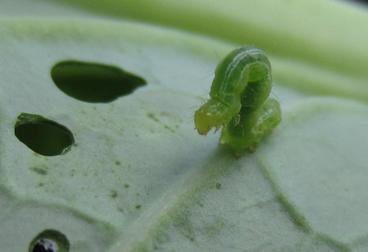
The cabbage looper, Trichoplusia ni, is native to the United States and feeds on many vegetable plants including all members of the cabbage family (Brassicaceae). This insect cannot overwinter in the Midwest. Adult cabbage looper moths annually migrate to the Northern United States and Canada from early July to late August, depending on the weather and airflow patterns. There can be 1 to 3 generations during the growing season in the northern states depending on arrival time and late summer temperatures.
Biology & Life Cycle
The adult cabbage looper is a mottled grayish-brown moth with a 1½ inch wing span. It has a small silvery white figure 8 in the middle of each of the front wings. The moths are nocturnal fliers, but can be seen during the day resting on the underside of cabbage leaves. Female moths can lay 200-350 eggs, usually over a 10-12 day period. Eggs are white, round and about the size of a pinhead. They usually lay eggs singly near the outer fringes of lower leaves and on plants not previously infested by loopers.
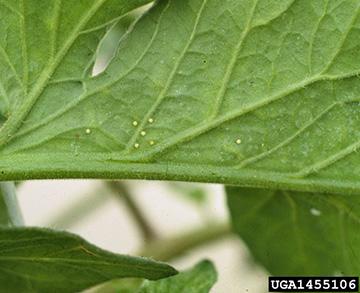
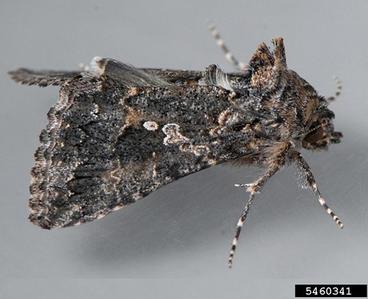
Larvae hatch from the eggs 3 to 6 days after being laid. They immediately begin feeding in the underside of the leaf producing small holes that do not break through the upper surface of the leaf. The larvae will feed for two to four weeks. Development of eggs and larvae will be slower during the cooler months of September and October.
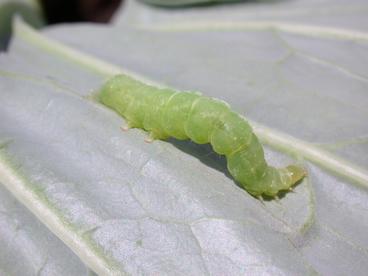
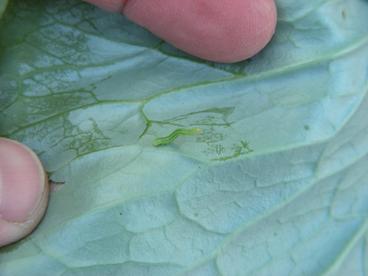
Larvae are light green with 2 white stripes on each side. Young (early instars) larvae are yellow to light green and only 1/8 to1/4" in length. Late-instars (5-6), grow to over 1½" in length, with most of the feeding damage occurring in the final instars. There are 3 pairs of slender legs near the head and 3 pairs of thick prolegs at the hind end. Unlike most Lepidoptera, there are no legs in the middle section which is generally humped up when the insect is moving. This trait is prevalent throughout all the larval stages and distinguishes loopers from other worms that feed on cole crops.
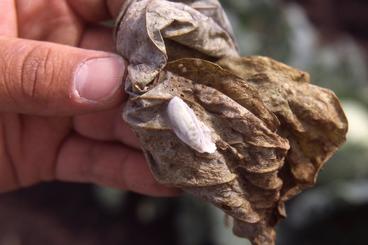
The pupae are light green when young and gradually turn dark brown when mature. They are about three fourths of an inch long and wrapped in a delicate cocoon of white threads. Pupae are usually found on the underside of lower leaves. The looper over-winters in the pupal stage.
Damage
Young larvae feed between veins on the underside of the lower leaves. Large larvae make ragged holes in the foliage and move to the center of the plant. Large loopers can also burrow through 3 to 6 layers of tightly wrapped head leaves in cabbage. Plants can be severely defoliated and stunted, producing no heads or becoming unfit for consumption. Large amounts of dark green pellets excreted by the feeding looper may stain cauliflower heads. The presence of cabbage looper larvae in broccoli heads renders them unmarketable.
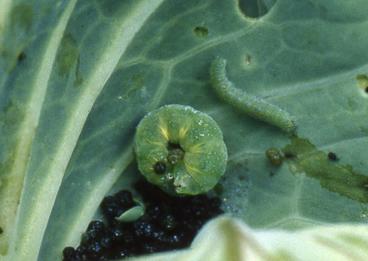
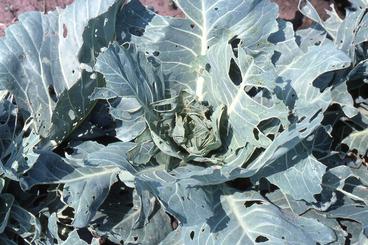
Management Options
Biological Control
There are numerous parasitoids of cabbage looper present in the Midwest. Of the 11 species that we have recorded in Minnesota, three species have been consistently found:Copidosoma floridanum, a small wasp belonging to the Encyrtidae family, and two Tachinids, Voria ruralis and Compsilura concinnnata (see Figure 1, below). Parasitism of cabbage looper is variable; however, in some years total parasitism of cabbage looper is greater than 70%. Trichogramma spp. is an egg parasitoid that offers some control of cabbage looper. Trichogramma pretiosum is the most common species that is commercially available in large quantities. For additional reading on Compsilura concinnata view the fact sheet here.
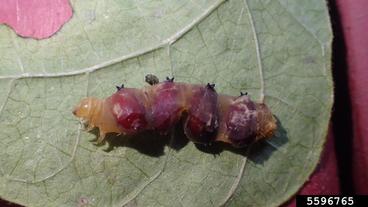
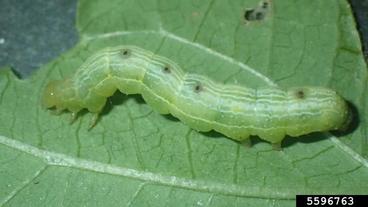
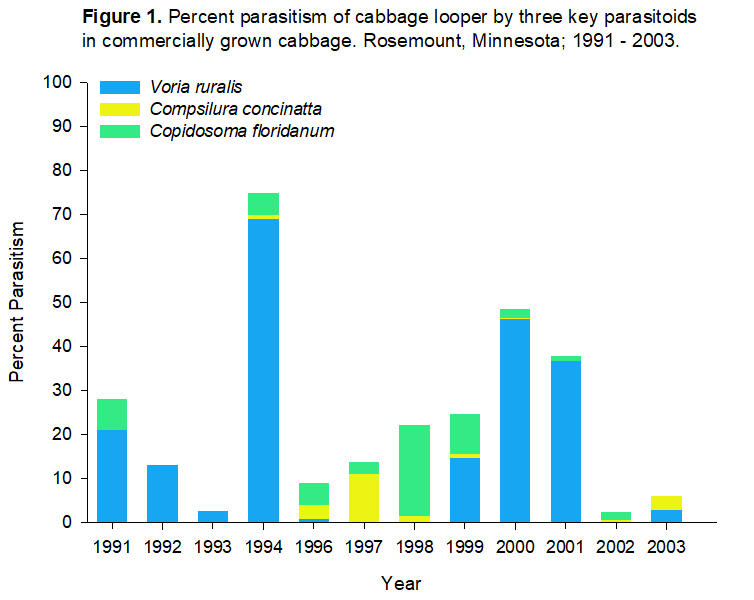
Action Thresholds for Bt/Insecticide Use
Bacillus thuringiensis, Bt, also helps to control the lepidopteran complex that affects cole crops and is easy on beneficial insects. The biological insecticide spinosad is also an effective option, while being less harmful to beneficial insects, like parasitoids. Consistent monitoring of flights, using pheromone traps, is helpful to know the optimal time to apply Bt or conventional insecticides. This is most easily accomplished by using cabbage looper pheromone traps (Scentry Biologicals, available here). The current threshold is 10% of plants infested with one or more cabbage looper larvae (young, early-instar larvae; up to ¼ inch). For optimum control, treatments should be applied when larvae are small. To ensure proper use of insecticides, refer to the most recent edition of the Midwest Vegetable Production Guide.
References
- Cornell University. 2003. Vegetable Disease ID and Management. http://vegetablemdonline.ppath.cornell.edu/.
- Hutchison,W. D., and E. C. Burkness. 1999. On-farm experience using action thresholds and SpinTor for the management of Lepidoptera in cabbage: steps to implementation, pp. 35-39. In Proceedings, International Workshop on Integrated Pest Management of Cole Crops, 20-21 May 1999.Universidad de Celaya. Celaya, Mexico.
- Pfleger, F.L. and S. L. Gould. 1999. Diseases of Cole Crops. University of Minnesota Extension Publication FS-1169.
- Rice Mahr, S.E., R.A. Cloyd, D.L.Mahr, C.S. Sadof. Biological Control of Insect Pests of Cabbage and Other Cruicifers. North Central Regional Publication 471.
- Midwest Vegetable Production Guide for Commercial Growers; https://mwveguide.org/guide
- Waters, L. 1988. Growing Broccoli and Cauliflower in Minnesota. University of Minnesota Extension Publication FO-1862.